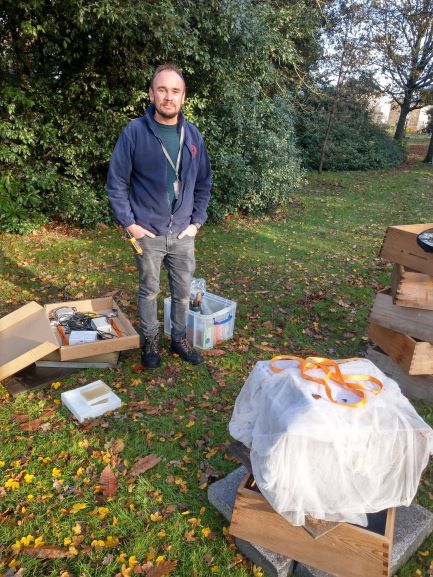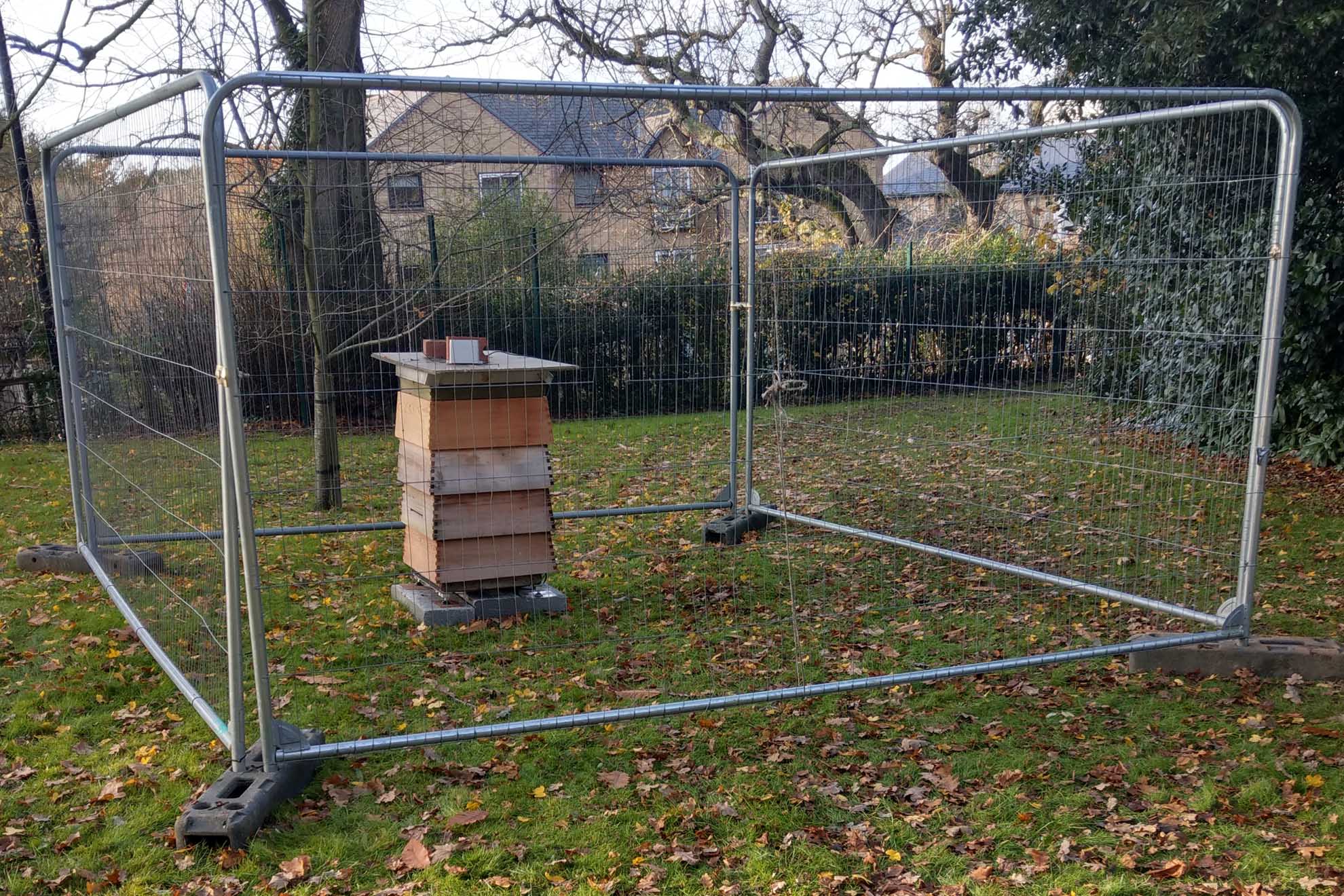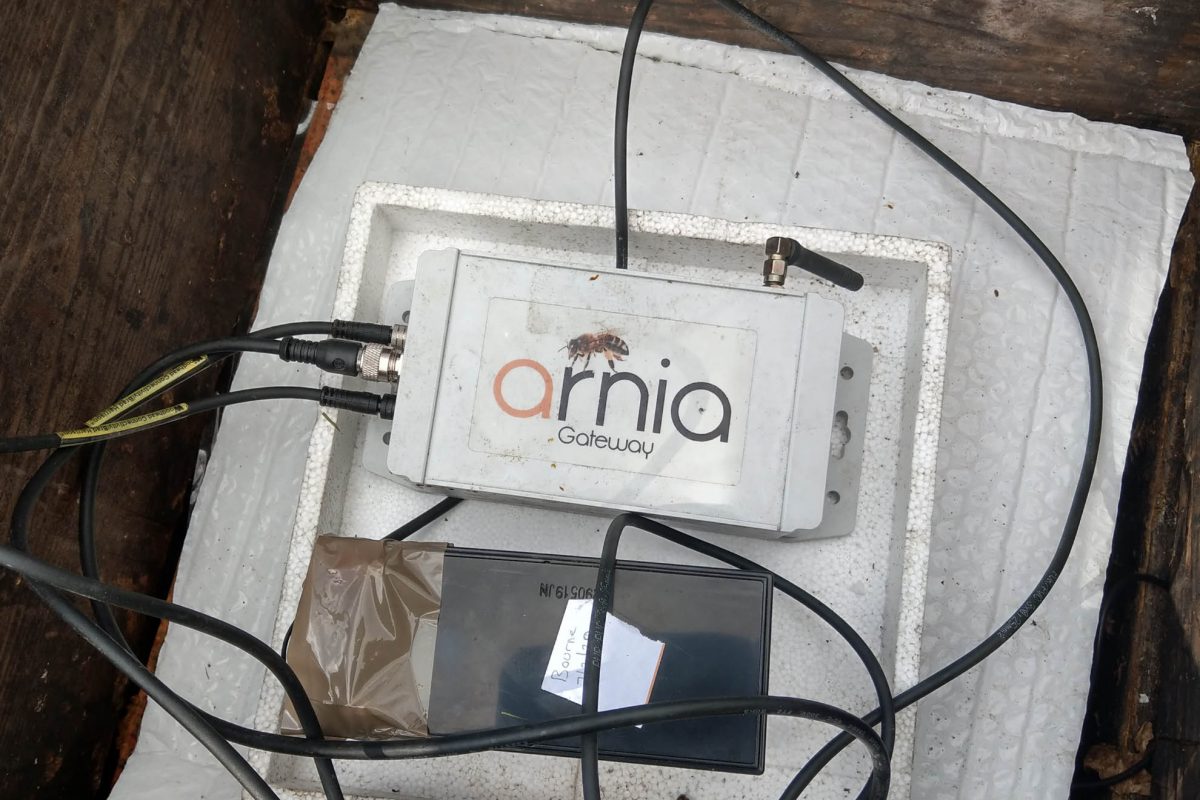Gavin and Colin Haley cleared the way and worked with Mark Gale unpacking the beehive colony. You can see the colony is inside what appears to be white sheets but is actually mosquito netting. The bees can breathe easily through the netting which ensures the lowest level of stress possible. BeesMAX do not restrict the bees movement whilst the bees are in transit. They can come out and walk around the outside of their white polystyrene box but safely contained in the inside of the mosquito netting.

Now you can see below the finished assembly of WBC outer shell and inside are the bees living within a white polystyrene box for extra warmth during the winter. There is grey polystyrene on the ground acting as a stand for the beehive above. This is to stop rising damp being drawn up and into the air space inside the wooden WBC outer shell. If you look carefully can you just see the weigh scales on top of the grey polystyrene base? These weigh scales will track the changing weight of the hive throughout the winter. Both the white and grey polystyrene used by BeesMAX is recycled waste material. Can you see the recycled plastic roofing sheet used to keep the rain out? The extra spread of the plastic roofing sheet across the top of the hive keeps more rain off than a traditional beehive roof. Watch out for further posts in the spring where you will see the white polystyrene box with the bees inside.

Below is the newly installed Arnia IT system for data collection
